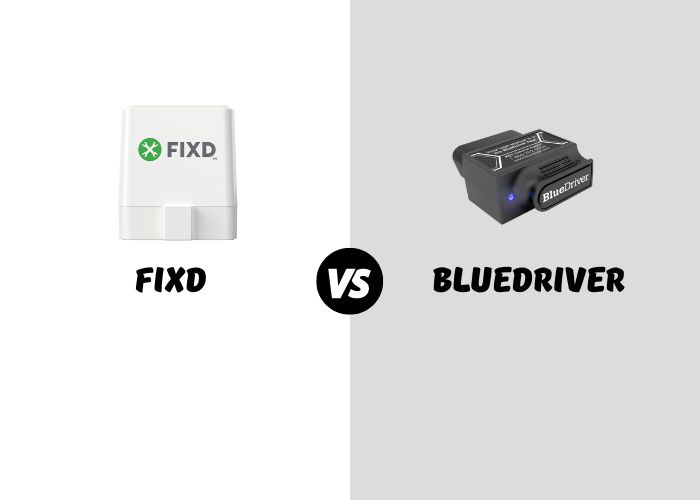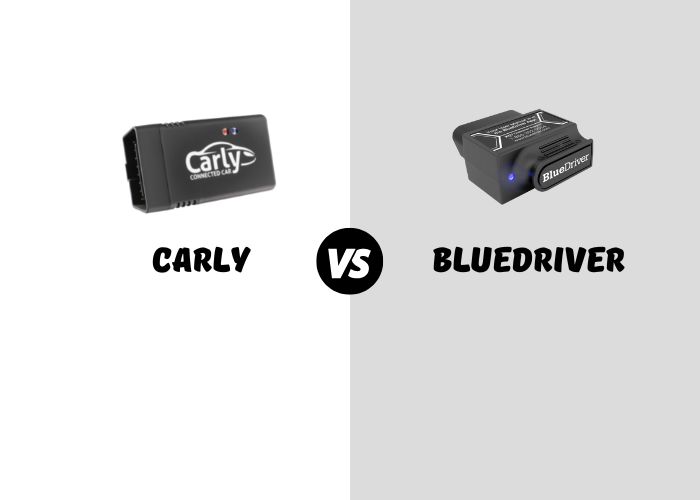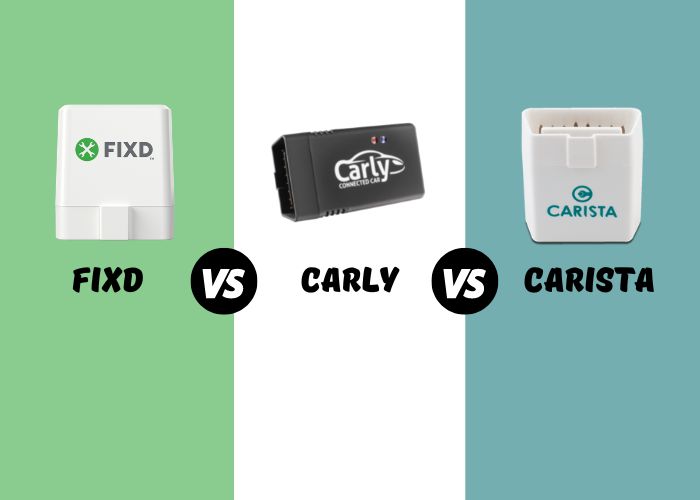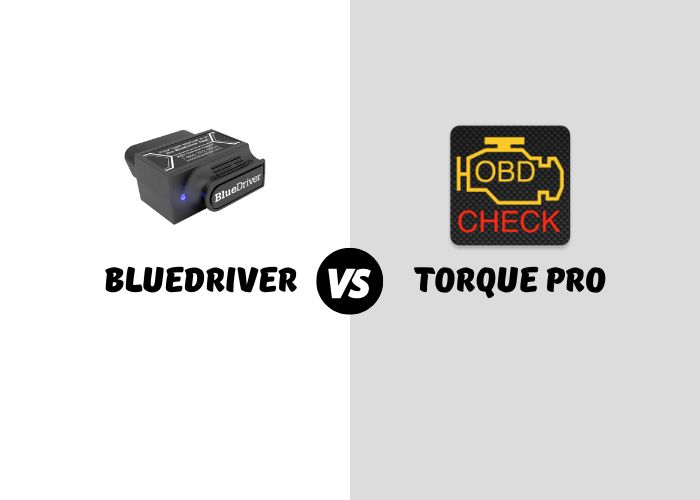Another day, another comparison between consumer-grade OBD scanning solutions. That’s because the market for these is very broad and full of options that range from fantastic to mediocre. There are branded solutions that have been developed to a high degree and generic, unbranded ones that don’t do what they say on the tin or, worse, cause issues with your vehicle. That’s why we are committed to providing you with meaningful comparisons of the most popular solutions from established manufacturers who know what they’re doing.
This comparison takes Bluedriver, Torque Pro, and Torque Lite, and places them in a three-way shootout to determine which one will best fit your needs. We know that everyone’s needs will vary. Some users may desire a basic diagnostic solution that will just tell them something is wrong with their vehicle so that they can take it to a workshop. Others may desire to delve deeper into matters, and even engage in areas such as coding, DIY maintenance and real-time performance monitoring.
If you’re wondering why you should consider getting an OBD scanner or even what OBD is, we’ve included a brief answer to both questions in the following sections. Ready? Let’s get started.
Why Should I Get An OBD Scanner?
Why should you get an OBD scanner? Well, for starters, it’s cheaper in the long run for you to check your car for errors on a regular basis from the comfort of your home rather than take it to a workshop for the same activity. Workshop scans can cost from $30 upwards, not to mention the possible requirement of making an appointment, the cost of driving to and from the workshop, plus time spent on the entire endeavor. With your own consumer-grade OBD scanning solution, you can check for errors anytime, and some will allow you to determine if a mistake is urgent or not.
There’s much more that you can do with consumer-grade OBD scanning solutions if you’re so inclined. You can view live data parameters such as temperatures, engine RPM, road speed, and more. You can create and view reports, making quick and easy comparisons across time. If you like customizing your vehicle, you can engage in coding, which allows you to tailor some aspects of your car to your likings, such as light illumination durations, flashing sequences, alarm sound sequences, engine start-stop, and more.
Finally, for DIY home mechanics, many consumer-grade OBD scanning solutions allow you to perform service minder resets, oil and filter change interval resets, battery re-initializations, and other service-required tasks, once again allowing you to save money as you can carry out minor servicing tasks by yourself.
What’s OBD? A Quick Rundown
OBD, known as On Board Diagnostics, was born out of a need to continually monitor vehicle emissions control systems and communicate any issues or anomalies to the driver. This emerged in the eighties, as a result of deteriorating air quality across major cities in North America and the world, due to increased automobile use. Led by California, Clean Air Acts were enacted, and OBD was the method for continuous monitoring of vehicular emissions systems. Manufacturers quickly realized it could be used for diagnostics of other vehicle systems, and started developing their own iterations. This caused fragmentation and was costly for workshops, as ports and readers differed across manufacturers.
To combat this, OBD2 was introduced in 1996 and unified the standard across a common port and set of standard protocols. In addition, bandwidth was provided for manufacturer-specific protocols as well. That’s why OBD2 is the prevalent standard even in 2022. OBD3 is currently under development, and should enter the market in the next few years, but for now, any vehicle manufactured by a major manufacturer from 2004 onwards will definitely have an OBD2 port.
In addition to professional-grade OBD2 scanners that cost hundreds or thousands of dollars, a market for consumer-grade offerings emerged in the past few years. These devices typically cost from $50 to $500, and can be wired, handheld ones, or use wireless adapters to communicate with an accompanying app installed on a smartphone. Bluedriver, Torque Pro, and Torque Lite all use this approach.
Fast Comparison – Bluedriver, Torque Pro and Torque Lite
Let’s have a quick comparison of our three contenders in this article. We’d recommend that you read the rest of our article to better understand what each option offers, as well as their strengths and weaknesses. However, if you’re in a hurry, this section will offer some enlightening. We’ve also scored them on certain attributes on a scale of 1 to 5 for your convenience.
| Attribute | Bluedriver | Torque Pro | Torque Lite |
| Smart device OS supported | Android, iOS | Android, Windows | Android, Windows |
| Our recommended OBD scanner | Bluedriver’s own adapter. | BAFX For Android | Veepeak Mini For Android |
| Cost of scanner (via Amazon) | $119.95 | $22.56 (disc.) | $13.99 (disc.) |
| Cost of app | Free with adapter | $5 | Free |
| OBD2 functions | 5/5 (full support) | 3.5/5 | 2.5/5 |
| Advanced functions | TPMS reset, battery registration, oil reset | None | None |
| System diagnostics | Engine, Transmission, SRS, ABS | Engine, Transmission, SRS, ABS | Engine, Transmission, SRS, ABS |
| MPG tracker (gasoline) | No | Yes | Yes |
| MPG tracker (diesel) | No | Yes | No |
| Freeze Frame Data | Yes | No | No |
| GPS Based Compass | No | Yes | No |
| Repair Reports | Yes | No | No |
| Data Graphing | Yes | Yes | No |
| Emissions Readiness Checks | Yes | Yes | No |
| Vehicle Coverage | All cars and SUVS with OBD2, plus 12v trucks | All cars and SUVS with OBD2, plus 12v trucks | All cars and SUVS with OBD2, plus 12v trucks |
Bluedriver
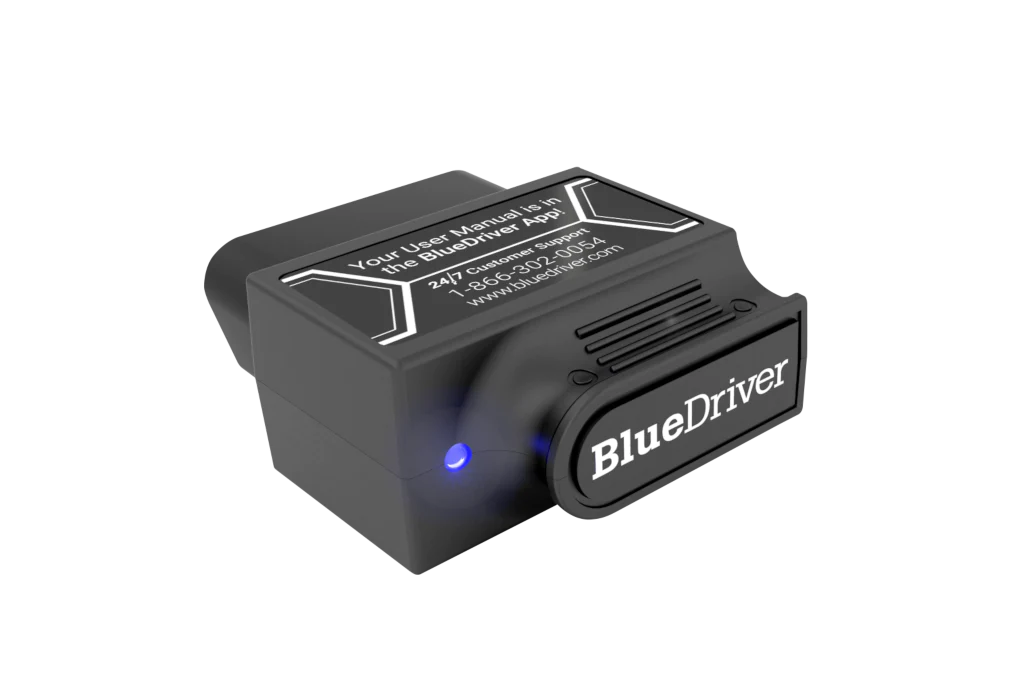
Bluedriver is a consumer-grade OBD scanning solution. You simply connect the Bluedriver OBD2 adapter into your vehicle’s OBD2 port and it communicates with the Bluedriver app on your smartphone via Bluetooth. Stated to be proudly researched, developed, and manufactured in America, Bluedriver offers a comprehensive feature set, which is to be expected as it is the most expensive solution on offer. The app is free because the cost is built into the adapter cost, and Bluedriver will only work with its own adaptor which you must purchase to use Bluedriver. The feature set of Bluedriver is extensive in comparison with the other two we are evaluating here, and includes:
- Conducting comprehensive diagnostic scans of all vehicle systems and generating error reports for you. Bluedriver even goes a step further with analysis and suggested corrective actions.
- Bluedriver also has access to its own database of expert repairs conducted by qualified technicians, which in turn improves the overall quality and efficiency of diagnostics and solutions presented.
- The app can be downloaded for free from the Google Play Store or Apple App Store, making the only cost involved that of purchasing the Bluedriver OBD2 scanner.
- There’s real-time monitoring on offer that can alert you to Check Engine Light conditions as soon as they occur, as well as allow you to monitor a myriad of parameters, including coolant and oil temperatures, transmission functions, engine rpm, road speed, and more.
- Your vehicle emissions system is continually monitored, and any anomalies immediately communicated via the app.
- Bluedriver can also compare your engine operating parameters against the ideal values stored in its online database, further helping you detect anomalies.
- Bluedriver can provide you service reports, informing you when servicing is due, and what needs attention at the next service.
- You don’t need to evaluate various OBD scanners to determine which is best, as Bluedriver comes with its own, that’s been developed to work with the app.
While Bluedriver is marketed as a consumer-grade tool that offers near-professional diagnostics and analysis, it does have some shortcomings. These include:
- There’s no coding function, basic or advanced, so you can’t use Bluedriver if you want to customize various aspects of your car and tailor them to your liking.
- Bluedriver doesn’t offer many maintenance functions, only offering TPMS reset, oil reset, and battery reinitialization. This can make it restrictive for advanced DIY enthusiasts.
- There’s no way to check for mileage tampering on used vehicles.
- ABS and transmission system scans are not supported for all vehicles.
- Bluedriver’s user interface has received mixed reviews. Some users are comfortable with it, while others find it to be confusing.
- There’s no GPS-based compass functions, or MPG trackers for gasoline and diesel vehicles.
Torque Pro
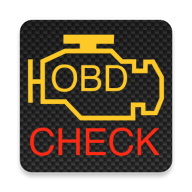
Torque Pro and Torque Lite are from the same manufacturer, and offer varying degrees of functionality, depending on your requirement. Let’s look at Torque Pro first. Torque Pro (and lite) do not come with a dedicated OBD scanner or adapter, so the choice is up to you. This can be rather daunting as there are hundreds of potential adapters out there. We’ve chosen one for you that we feel would be a good complement, the BAFX For Android adapter, and at just $22.56 (discounted price on Amazon), costs about as much as a decent meal out. You just need another $5 (basically, a coffee shop latte), to buy the Torque Pro app, and you’re good to go. Let’s have a look at what Torque Pro offers.
- Torque Pro offers a more comprehensive set of diagnostic abilities than Torque Lite, with the ability to read engine parameters, plus transmission, ABS and airbag parameters.
- You can evaluate some performance characteristics of your vehicle, such as acceleration and quarter mile tests.
- Torque Pro can continually monitor your vehicle’s emissions control system and alert you to any anomalies.
- The data graphing function provides you an easy, graphical way to view data parameters over time.
- Torque Pro can also access and display engine horsepower and torque outputs (if supported by the vehicle), transmission temperatures, turbo boost, and real-time MPG information for gasoline and diesel vehicles.
- The app can continuously monitor parameters, and provide real-time warnings if they exceed the required ranges, such as coolant temperature, oil temperature, and other critical factors.
- Torque Pro can read out most vehicle error memories and present error codes to be analyzed.
- You can use Torque Pro to monitor your vehicle’s speed and position via its GPS compass functionality, which is useful if you’ve given the vehicle to a new driver such as a teenager and wish to monitor their driving.
As you may guess, with such a low price, Torque Pro does miss out on some advanced functions that Bluedriver and other apps offer. Let’s look at some of its shortcomings.
- Torque Pro only supports Android, and Windows Phone, which is a dying smartphone operating system. It does not support Apple iOS devices, making it unsuitable for those using the Apple ecosystem.
- The app does not offer repair reports, freeze frame functions, or advanced diagnostic functions which Bluedriver comes with.
- Torque Pro does not have access to a vast database of expert information like Bluedriver.
- No advanced service functions such as maintenance minders, or resets.
- You won’t get repair requirements or advice from Torque Pro, you’ll need to check these yourself after researching the displayed error codes.
Torque Lite
Torque Lite is the cheapest of the solutions from Torque, and you can get away with it for as little as $15. That’s about the cost of a Big Mac! Since the Torque Lite app itself is free, we’ve chosen a cheap as chips adapter that works with it, the Veepeak Mini for Android, at just $13.99 on Amazon, after discount. The makers of Torque envision Torque lite to be a way for users to evaluate if Torque suits their needs, and upgrade to Torque Pro if desired. However, for a layperson who just wants to know if everything is OK in their vehicle, Torque Lite is perfectly adequate. Let’s have a look at its feature set.
- Critical OBD diagnostics functions are supported, able to read error codes from critical systems and display codes for the user to view and take action.
- Basic level of OBD2 functions.
- Offers MPG tracking features for gasoline vehicles.
- Simplistic user interface is ideal for novice users.
- Basic monitoring of driving habits, so you can monitor a new driver such as a teen using your car.
What’s missing from Torque Lite? A fair bit, if you compare it to Torque Pro, and don’t even try to compare it to Bluedriver. We’ll get to why you shouldn’t do this in the next section, but in the meantime, here’s what you need to know about the shortcomings of Torque Lite.
- Like Torque Pro, it only supports Android and the almost dead Windows Phone OS. There’s no Apple iOS support so those with Apple devices are left out in the cold.
- There’s no advanced service functions and resets.
- You won’t find repair reports or data graphing functions.
- There are some parameters that can’t be monitored in Torque Lite, such as turbo boost, performance testing, quarter mile testing and diesel MPG, which are available in Torque Pro.
- Torque Lite won’t explain what error codes mean, you’ll need to do your own research there.
What Should I Get?
If you’re a novice who just wants an overview of your vehicle’s most critical systems, and an alert when something needs attention, Torque Lite is your best bet. With an entry cost including our choice of adapter of less than $15 if you shop around, it’s a very basic solution that offers the most essential functions, and if you have a gasoline vehicle, you can access its MPG tracking as well. However, if you’re an Apple user, you’re left out in the cold, as Torque Lite (and Pro) only work with Android and Windows Phone at the time of writing.
If you’ve liked Torque Lite, or want something a bit more advanced, but still under $50, you can check out Torque Pro. We’ve recommended an adapter for this as well, and Torque Pro unlocks additional features such as GPS monitoring, performance parameters such as the all important quarter mile, and data graphing, to name a few. If you own a diesel vehicle, Torque Pro can provide you MPG tracking for that, as well as for gasoline vehicles. However, if you’re an Apple iOS device owner, you’re still out of luck for now, unless you’ve got an old Android phone lying around that you can repurpose.
Bluedriver is a cut, or several, above these two, in terms of features as well as price. The price creeps north of $100, although it’s possible to find bargains if you shop around. Since Bluedriver only works with its proprietary adapter, you can rest easy knowing that the two have been developed in tandem. Bluedriver’s feature set, while not professional level, offers some useful options for intermediate users, as well as those who dabble in a bit of DIY maintenance.

